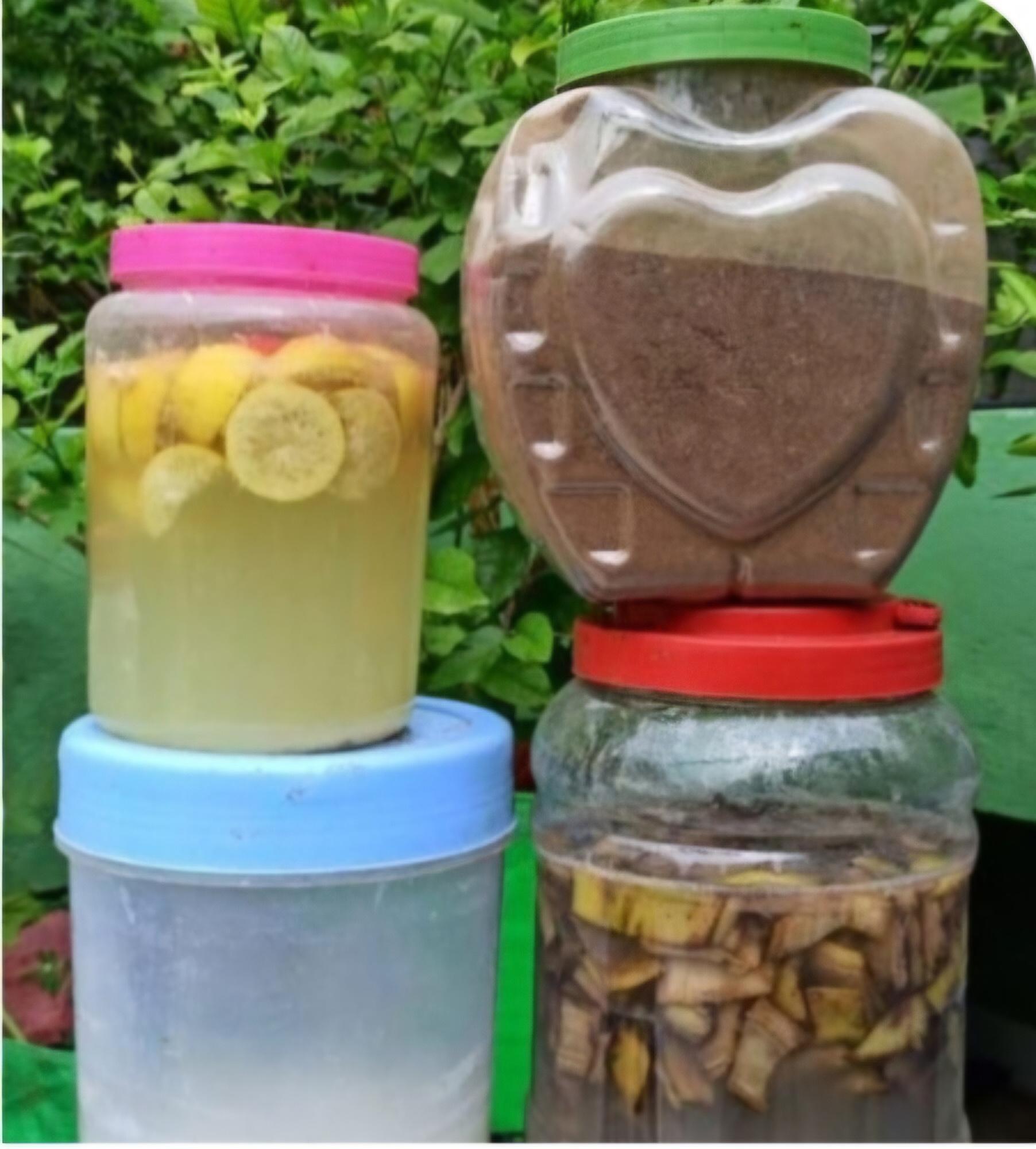5 Ways to Make The Ultimate Organic Fertilisers At Home For a Thriving Garden
Edited by-SRIHARI M
As urban gardeners strive to grow organic fruits and vegetables, these five unique, easy-to-make fertilisers make the job easy and keep potted plants healthy and thriving.
For those striving to grow healthy fruits and vegetables organically, here are five unique and easy-to-make organic fertilisers to try at home!
1. Trichoderma biofertiliser
Visakhapatnam-based Bangaru Jhansi, who turned her terrace into a blooming green oasis with 600 garden plants, suggests adding biofertilisers in the pots. She shares the composition of one of her trichoderma-enriched biofertilisers.
“Take 100 kg of cow dung, 10 kg of neem powder, and two kg of trichoderma viride. Mix the ingredients and sprinkle some water over it. Cover it with a cotton cloth and keep them under shade. After seven days, white-coloured good bacteria will have formed. Then, directly mix the compost with cow dung and add to the soil,” she explains.
2. Fish-based fertiliser
Bangaru also prepares a unique fish amino acid biofertiliser that promotes healthy plant growth by regulating phototropism and photosynthesis, and stimulating carbon and nitrogen metabolism.
As the name suggests, the fertiliser is made using fish! She says, “Take 1 kg of sea fish and 1 kg of jaggery. Mix it in a terracotta pot or plastic container with the help of a stick. Then, cover it with a cotton cloth and keep it under shade,” she says.
“Every morning and evening, stir it in a clockwise direction. The fertiliser will be ready after 15 days. Take 10 ml of fish amino acid and dilute it in five litres of water, and then, spray it on the leaves and under soil roots of the plants,” she adds.
3. Fish and drumstick leaves
Chennai-based Dr Naveen Kumar grows more than 250 varieties of fruits and vegetables — including spinach, tomatoes, brinjals, custard apple, lemons, mulberries, and dragon fruits in a small space.
He prepares a unique organic fertiliser using fish and drumstick leaves to boost plant growth.
“Take one kg of fish in a clean plastic container and mix it with one kg of jaggery, handful of drumstick leaves, and two well-ripened bananas. Close the lid and keep it under shade. The fertiliser will be ready to use after 21 to 27 days. Rich in nitrogen, phosphorus, and potassium, this fertiliser helps boost flowering and fruiting in plants. It should be given once every 15 days,” he explains.
4. Mustard & neem cake
Odisha-based Jayanti Sahoo grows 17 types of fruits including guavas, pomegranates, oranges, white jamun, mangoes, and chikoos on her 350 sq ft terrace garden. She nurtures her garden with a special fertiliser made from mustard and neem cakes.
“Take one kg mustard cake and 250 grams of neem khali powder and mix it in 5 litres of water. Stir it and then keep it under shade for five days. Mix one litre of this liquid fertiliser in 10 litres of water and give the diluted fertiliser to the plant every 15 days. This liquid fertiliser helps boost the flowering and fruiting in the trees,” she says.
5. Watermelon rinds
Surat-based urban gardener Anupama Desai says compost prepared from watermelon rinds make a good liquid fertiliser and to prepare this, gardeners only require water.
“Toss out the watermelon rinds directly into the compost bin. Chop the rinds into small pieces and transfer them to a plastic bucket. Fill this bucket with twice as much water as watermelon rinds. Cover this bucket and keep it under shade, away from sunlight,” she says.
“Stir the contents of the mixture once every day. The liquid fertiliser will be ready to use in about three days. Filter the mixture and strain the water. Now you can either add the fertiliser to the plants directly or mix it with water in a ratio of 1:1. Give this fertiliser to plants in the morning or evening after sunset,” she adds.
By using these simple, organic fertilisers, urban gardeners can nourish their plants effectively while embracing a healthier, chemical-free approach to gardening.

